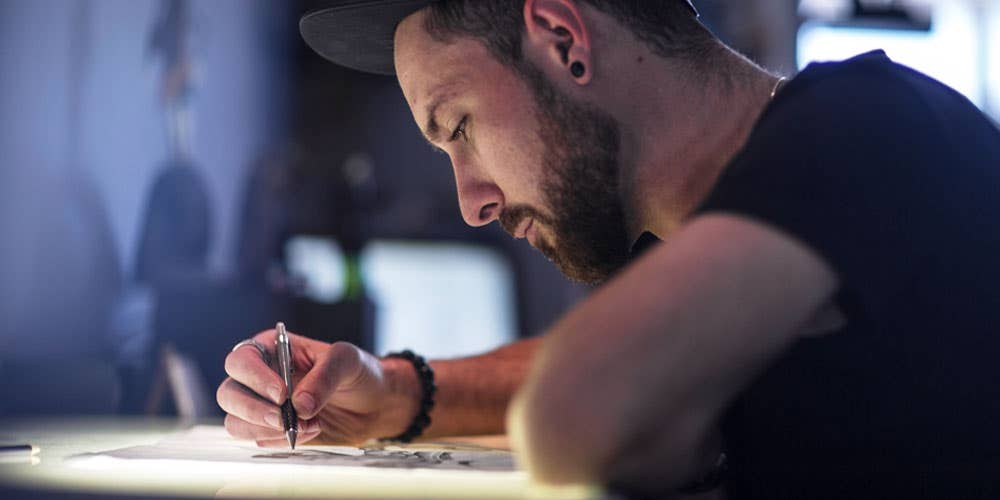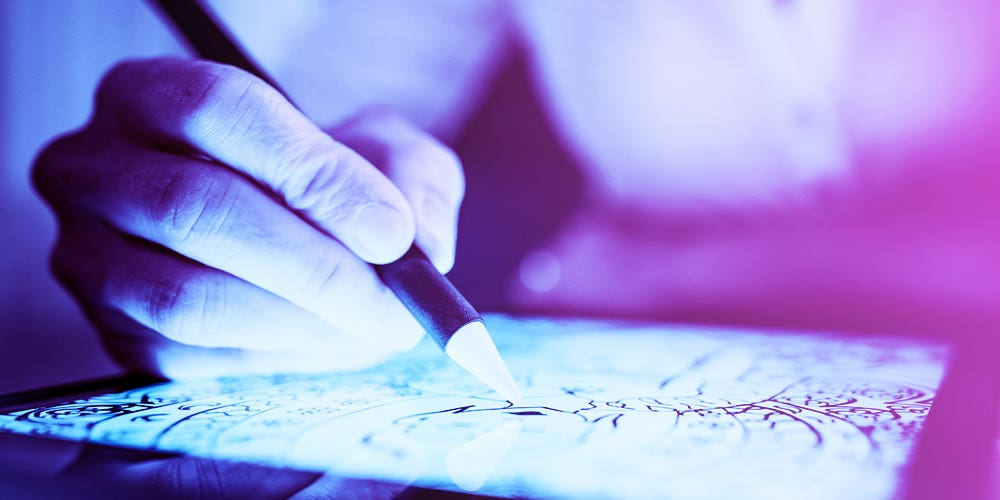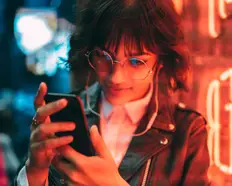Yapay Zekâ (AI) İş Danışmanınız Ava ile Sohbet Edin
Merhaba, ben Ava, işinizi güçlendirmek için AI (Yapay Zekâ) rehberiniz!
İster zaten bir işletme yürütüyor olun, ister bir işletme açmayı hayal ediyor olun, Yapay Zekâ (AI) destekli freelancerları kullanarak hayalinizi gerçeğe dönüştürmenizde yardımcı olmak için buradayım. İş hedeflerinizi paylaşın ve birlikte yetenekli freelancerlarımızın teklif verebileceği bir proje oluşturalım. Haydi, hayalinizi gerçek yapalım!
Bir işe sahibim
Bir işletme açıyorum
Görüşmeyi e-posta adresinize gönderirken bir hata oluştu. Lütfen daha sonra tekrar deneyin.
Görüşmelerinizi her saat yalnızca bir kez kayıt edebilirsiniz. Lütfen daha sonra tekrar deneyin.
Bu görüşme çok kısa. Kayıt etmeyi aktifleştirmek için Ava ile konuşmaya devam edin.
Logo Design
Logo design is one of the most important aspects of branding.
20 Nis 2022 • 16 dakikalık okuma
6 Mar 2023 tarihindeLee J. tarafından güncellendi.

Writer and Editor
Panoya kopyalama başarısız, lütfen izinlerinizi düzenledikten sonra tekrar deneyin.
Panoya kopyalandı.

Question | Answer |
|---|---|
Question | Answer |
Question | Answer |
Question | Answer |
Logo design is one of the most important aspects of branding. Whether you’re rebranding or launching your business, getting your logo design right is fundamental to making your brand instantly recognisable and providing a visual representation of what you do and what you stand for.
This page will guide you through why your logo is crucial, how to make sure it connects you to your target market and whether your best choice is to design your own logo or find a freelance logo designer.
What is a logo?
A logo is the face of a brand. It may appear to be simply an image or a piece of text, but it identifies a business and helps build brand recognition. Logos are made up of images and texts that convey something about your business and appear on:
It’s important to recognise that logo design is just one element of branding. But it will be at the heart of pretty much every touch point on your customer’s journey so consistency is key to help embed it into the consumer psyche and keep your brand front and center of consumers’ minds.
What is the purpose of a logo?
A logo exists to promote and define your brand. It establishes credibility and professionalism by meeting a basic consumer demand to know what product or service you offer, what makes your brand different and what it stands for.
The art of logo design is to find the right blend that gives your brand its own identity and makes it stand out from your competitors. Your logo should reflect something of your USP and brand values with a distinctive style that still makes it clear what you sell. Ultimately, it should form a strong visual association of your brand and create an emotional connection with your target market.
Yes, there are some massive brands (Apple and McDonalds are great examples) that have logos that don’t necessarily reflect what they do, but they have earned the right to do that as they are already global brands. Go back to 1948 and McDonalds even had to explain their offering by including the words "Famous Hamburgers".
And the first iteration of Apple’s logo was very different from the image we all recognise today.
Source: Medium
Different logo types
Logo designers tend to talk about seven different types of design:
Wordmarks – Using your name as your logo. Google and Disney are two obvious examples. This is a good choice if you have a memorable name for your business. The success of a wordmark logo is dependent on getting the typography and color palette right.
Source: World Vector Logo
Lettermarks – Similar to wordmarks but uses just letters. Often used when the full name of the business is too long for a logo or as part of a rebranding process to shorten the name and make it roll off the tongue. Examples include HBO and HP. Lettermarks have increased in popularity with the advent of apps. When designing a lettermark logo, how it would appear on an app menu on your user’ phone is a major consideration.
Pictorial marks – Usually a single image that represents a brand. The Nike tick is an example. Although it is sometimes seen with the name or tagline next to it, the logo is a universal symbol of the brand even when seen on its own. Those with an artistic eye can condense an entire brand image and mission into a single symbol.
Combination mark – Combination marks combine symbols with words or letters. Burger King placed the words of their name between two cartoon burger buns to create a memorable logo that clearly displays the brand name and tells you what the business does.
Abstract logo marks – These are logos that use unique, often bespoke designed, symbols. Spotify is a prime illustration of a successful abstract logo mark. It’s simple, memorable and distinctive. The three lines clearly display that this is an innovative company at the forefront of the digital revolution. An abstract logo mark is a great way to generate a feeling that your brand is unique and something to be a part of. This can be a head start in building brand loyalty.
Mascots – Mascot logos are often used for products aimed at children and families. They incorporate anthropomorphic elements into their design so a character becomes the representation of the brand. The name Rich Uncle Pennybags may not mean anything to you, but when you see him, he is instantly recognisable as the face of Monopoly.
Source: Forbes
Emblems – Emblems typically combine words and imagery to create a crest, seal or badge style design. This can be tricky to get right as emblems can appear staid and outdated but they can also make your logo look official if this is something you want to convey.
Of course, you don’t need to stick to just one logo type. Combining different elements allows you to get creative and come up with something distinct and memorable.
The five principles of logo design
Fundamentally, your logo should highlight crucial information about your business. That might be the industry you work in, location, target demographic, ethos, or anything else that will resonate with your audience and make them take notice.
It should be instantly recognisable and clearly reflect your brand ethos and identity.
One of the biggest challenges in designing your own logo is being able to take a step back and assess your design ideas objectively. It’s important not to get hung up on your first idea or be influenced by personal taste.
Ask yourself whether your logo design is:
Design is all about balance. Anything too generic or cliché will not get noticed or will appear ill thought out. Something too trendy will fail to convey a sense of longevity and authority and will quickly become dated.
Every decision and every iteration of your logo design should be judged against the five principles of logo design to make sure your focus is always on delivering something that drives results.
Elements of logo design
There are three main elements of good logo design and these must come together to complement and enhance one another.
Source: Unsplash
When designing a logo for your brand, remember that old adage that it should be more than the sum of its parts. It’s not essential that every one of these is used, but you should explore each of them and think about what they can bring to your logo.
Ultimately, whether you incorporate text, images or both, and the color palette you choose, you should be able to explain your design decisions.
Typography
When you start looking at how to get started with logo design, you’ll hear the word ‘typography’ a lot. It basically means ‘font’ and refers to the style of lettering you choose.
This is a major decision and is heavily influenced by how you want your brand to be perceived. The font you choose should match your USP and complement the other areas of your logo design.
There are thousands of fonts available (and you can even have a logo designer create one just for you), but they can be broadly categorized into four styles:
If you choose a wordmark or lettermark logo and want to add a tagline, it should be in a different font. The second font must complement the main one and the overall styles should be aligned. Two fonts is generally considered the maximum for a logo design but, in certain circumstances, you may opt for a third if the design demands or allows it.
A tagline is not an essential element of a logo but can add some context or help to make it memorable.
Imagery
This can be pretty much anything and getting it right often requires an artistic eye. Choosing an image that clearly displays what you do, like a car for a garage, can make it difficult for your logo to stand out. But equally, going for something too abstract might fail to clearly show what you do or to resonate with your target market.
Color
Color psychology plays a significant part in branding and logo design and is a complete topic in its own right. One of the great things about color psychology is that it is something that we can all understand if we take a moment to consider the impact color has on our own mood so you don’t always need to rely on experts when it comes to choosing the right color palette for your brand.
As an overview of how color influences logo design:
Source: Unsplash
When choosing the colors for your logo design, it is important not to overdo it. Any more than three colors and the chances are the meaning of each of them becomes lost amid patchwork confusion.
Remember, the purpose of your logo is to grab the attention of your target consumers and draw them into finding out more about your brand. Concentrate on the color (or colors) that will highlight what makes your business unique. If you get your logo design right, you earn the right to elaborate on your USP.
The color wheel can be a great help in working out which colors and shades complement each other. Colors that are directly opposite on the wheel will contrast with and complement each other to provide dynamism.
Groups of three colors that appear alongside each other on the wheel are called ‘analogous colors’. Used together, they bring harmony to logo design.
If you want to use three colors, start your search by looking at ‘triadic colors’ that are equally spaced around the color wheel to ensure they are balanced. You may choose to subvert this rule but that must be a deliberate design decision and is something you should discuss with a professional logo designer to avoid making a costly error.
Source: Home Edit
Getting started with logo design
Before you start getting creative with color, design, typography and images, you need to go right back to basics and decide what you want your logo to be. Questions you need to ask include:
Oftentimes, a good old-fashioned brainstorming session is the best way to get ideas down on paper. Involving the whole team will provide a diverse set of suggestions while helping get your team onboard with the logo design.
If you’re a one-man band, invite a few friends around to make sure you get some different perspectives and design ideas.
Think about whether your brand is:
Once you have some ideas, why not create a mood board? Play about with different imagery, typography and color combinations and see what aligns itself with what you decided were the fundamental elements of your design aspirations.
How to design a logo for free
It’s quite common for start-ups and entrepreneurs to ask, ‘Can I design a logo for free?’
The answer is that there are countless websites that will allow you to create your own logo design completely without charge. For some, this might be the best decision. For others, it is a false economy.
If you only want to use your logo on business cards, your website and our social media profile pictures, using free software can provide you with an adequate logo. At least then you can start getting it out there to let your target market know you exist.
There are, however, some serious issues when it comes to DIY logo design:
Whether you are designing your own logo or hiring a freelance logo designer, you will need to carry out the same amount of preparation in terms of deciding the imagery, font and color combination.
With a professional logo designer taking on the task of turning your vision into reality, you can rest assured that they have the necessary skills and tools to create something truly unique.
If you choose to design your own logo, how much time it takes and how successful the end result is, will be determined to a large degree by your level of technical expertise. But if it takes you a full day to design a simple, generic looking logo that an expert could have generated in an hour, is your brand better or worse off for your decision to save a few pennies?
Hiring a freelance logo designer and then focusing your attention on what you do best rather than cobbling together a sub-standard logo would be a better use of your time and facilitate a more professional and effective logo.
Remember, if done properly, your logo design should last for a decade. This is something worth investing some money in to ensure you end up with a logo that serves its purpose. It may cost more to hire a professional logo designer. But think like a businessperson. It’s not all about the amount you spend. Success is measured by the return on our investment.
Why hiring a freelance logo designer is your best move
Even if you have an artistic eye and some technical design expertise, designing your own logo is rarely a good idea for several reasons:
You could choose a design agency to help with your logo design but they tend to be more costly than freelancers.
Freelancers usually have fewer overheads and this translates into better rates. They also have greater flexibility when it comes to negotiating price or deliverables.
Working relationships with freelance creatives are typically more personal and informal. Try to think ahead. While your intention might be for your logo to last more than a decade, there could be all sorts of other reasons you might want design services over the coming years.
It’s perfectly feasible that you could establish a relationship with an agency, but when you go back to them in two or three years, they may not have the same designers. Design is a very personal thing and when an individual leaves an agency, their particular spark goes with them. Working with a trusted freelancer ensures consistency across all design tasks. It also means the individual you work with in future design tasks knows your business and has already established a way to express your brand identity and values through symbolism.
Where can I find a logo designer?
Finding freelance logo designers online is easy. Finding one you know you can trust is slightly more challenging. Naturally, every designer describes themselves using words such as ‘innovative’, ‘professional’, ‘reliable’.
Only with independent reviews can you work out which ones have a body of work that reinforces their claims.
Freelancer.com is the world’s biggest freelance marketplace. You can find top logo designers from right across the globe and check out their portfolios and reviews for peace of mind and confidence.
How to hire a logo designer on Freelancer.com
There are three ways to find a freelance web designer using the platform:
To hire a freelancer directly, you need to have a good idea of the skills you want from your logo designer.
From the home page, click on ‘Find Freelancers’ and choose ‘By Skill’ from the dropdown menu. Then choose ‘Logo Designers’. You will be presented with a list of freelance logo designers. To narrow your search further, use the search parameters on the left of the screen.
Click ‘Hire Me’ to send a message to your chosen freelancer about your web design project.
Posting a project allows you to provide a description of your task and a price range.
A clear, detailed brief provides the best chance of having the top performing freelancers express an interest. Once you have posted your project, you will start to receive bids from freelance logo designers keen to work on your design.
As bids come in, pay attention to:
• Bid amount (Don’t automatically rule out a bid that is outside your proposed budget. You could negotiate a better price or pay extra for added quality)
• Written response (Is it specific to your brief?)
• Star rating (Out of 5)
• Client reviews
• Portfolio
• Project completion rate
• On-time rate
• On-budget rate
Also look for:
The Preferred Freelancer badge. The orange badge with a white star that indicates they have achieved a high rating and good reviews - and have been accepted into the elite Preferred Freelancer Program.
The Verified badge. The blue shield with the white tick that shows Freelancer.com has verified the freelancer’s identity.
Posting a contest is often the best way to get a logo design. Once again it’s crucial that you provide a detailed brief. After posting your contest, you can keep checking on it and provide ratings or feedback on entries as they come in or wait until the closing date and then see what entries have been received.
Entrants will create their versions of your logo design so you can see exactly what is on offer and choose the one you like best according to the five principles of logo design.
How long does it take to have a logo designed?
This all depends on how complex the design is and how well you have carried out your preparation. If you have established a clear brand identity and know exactly what you want from your logo design, it makes your designer’s job easier and you should need fewer iterations to arrive at your perfect logo.
The first draft of a simple logo will typically be available within a couple of days and it shouldn’t normally take more than ten days for even the more complex designs to be ready for publication.
Be sure to discuss timescales when choosing which freelance logo designer to work with so you both know what is expected from the outset.
How much does it cost to hire a logo designer?
Again, the complexity of the design is instrumental in determining the cost. You could have a professional logo design that will last for years for as little as $100 but more complex designs can run to thousands.
A simple design for around $100 that lasts for ten years equates to $10 per year or $0.83 per month. When you break it down like that, it’s easy to see why a professional logo design that promotes your brand and drives conversions can drastically boost ROI.
Find a freelancer logo designer today and give your brand the presence and status it deserves.
Bize ne yapmaya gereksinim duyduğunuzu anlatın
Proje adınızı girin
İlgili Hikayeler
Siz projenizde yardımcı olması için Teknik Co-Pilotlarımızdan biriyle konuşun
Sadece Sizin İçin Tavsiye Edilen Makaleler

The hidden meaning behind 40 of the coolest logo designs from the world's biggest brands.
7 min read

If you're thinking of hiring a graphic designer to design your logo, there are some details you should think through first.
6 min read

Not every graphic designer can pull off a great logo design. Follow these 6 tips to ensure your logo sparkles and clients keeps coming back for more.
6 min read

Graphic designers who can't afford Adobe's monthly subscription need to know about these vector tools. They're easy to use and some are even free.
4 min read
Teşekkürler! Ücretsiz kredinizi talep etmeniz için size bir bağlantı gönderdik.
E-postanız gönderilirken bir şeyler yanlış gitti. Lütfen tekrar deneyin.
Ön izleme yükleniyor
Coğrafik konum için izin verildi.
Giriş oturumunuzun süresi doldu ve çıkış yaptınız. Lütfen tekrar giriş yapın.




